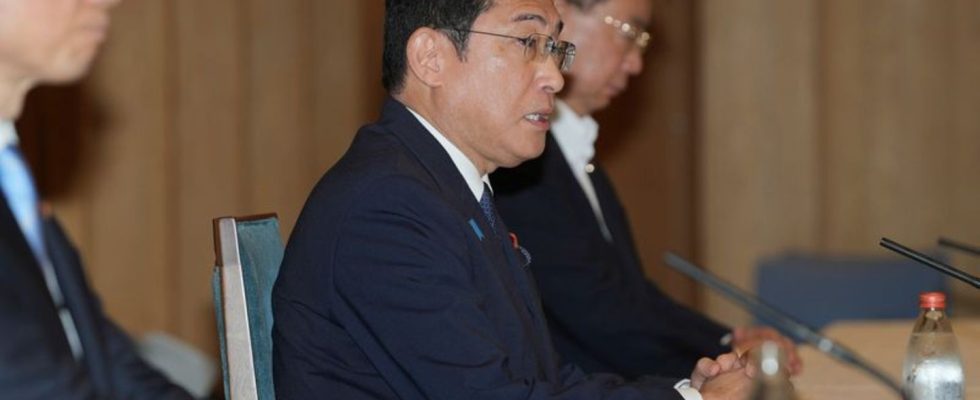nuclear accidents
Japan’s prime minister bears responsibility for Fukushima water
Fumio Kishida (M), Prime Minister of Japan, speaks during a meeting with National Federation of Fisheries Cooperative Associations Chairman Sakamoto at the Prime Minister’s office. photo
© Zhang Xiaoyu/Pool Xinhua/AP/dpa
Plans to release radioactive cooling water into the sea have met with opposition from Japanese fishermen since their announcement. Prime Minister Kishida now wants to allay concerns.
According to Japanese media reports, Kishida wanted to meet with the responsible ministers in his cabinet on Tuesday to decide when to start dumping the treated cooling water. It’s expected to be by the end of this month or early September. In 2011, an earthquake and tsunami caused a core meltdown at the Fukushima Daiichi nuclear power plant. The reactors must be further cooled with water stored in tanks. Because space is running out, the water is to be channeled into the sea via a one-kilometer-long tunnel built in the Pacific. The disposal of the 1.3 million tons should take 30 years.
Before dumping, the cooling water is treated. However, the filter system cannot filter out the radioactive isotope tritium. The operator Tepco therefore wants to dilute the water in such a way that the tritium concentration drops to around 1500 becquerels per liter, which corresponds to less than a fortieth of the national safety standard. Since the government announced the release plan two years ago, it has met with opposition from Japanese fishermen who fear the reputation of their produce will be further tarnished. You’ve been trying to recover in business since the super meltdown.
Kishida had visited the nuclear ruins the day before and had the facilities for the planned introduction of the water into the sea explained to him. At the meeting with Sakamoto, he wanted to convince the fishing associations that the plan was safe. In addition to the fishermen, the project is also met with great concern in neighboring countries such as China.

